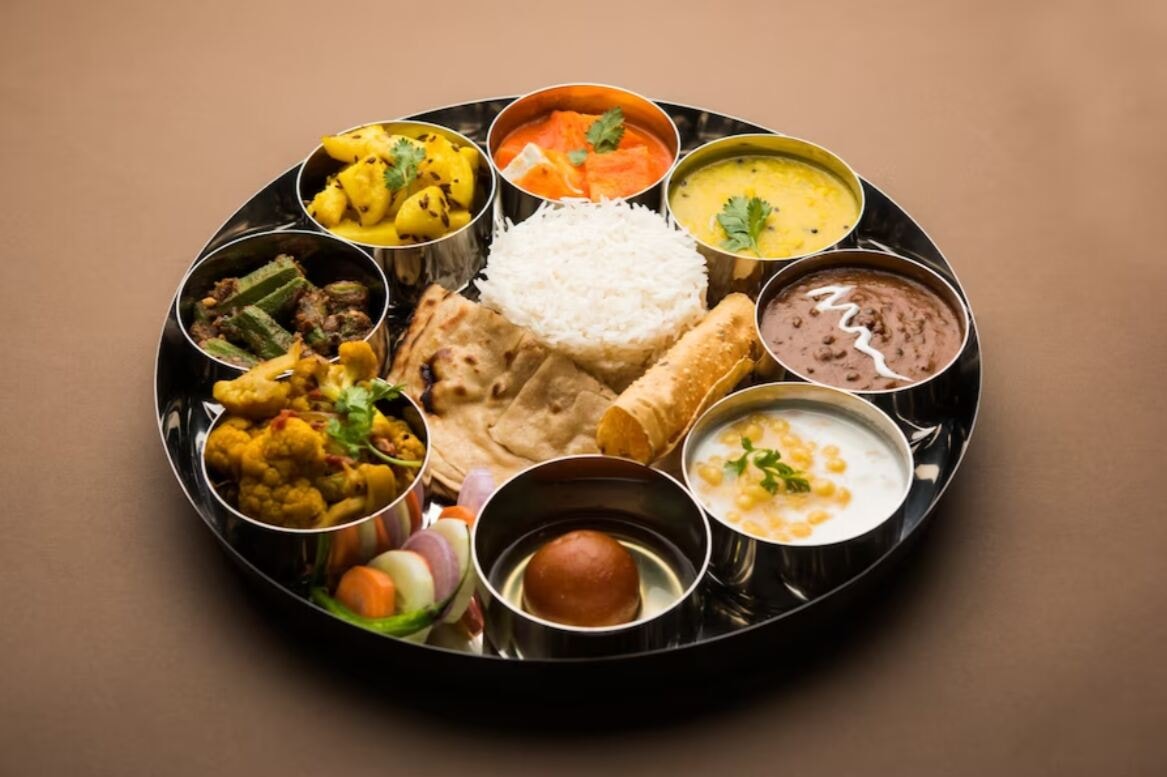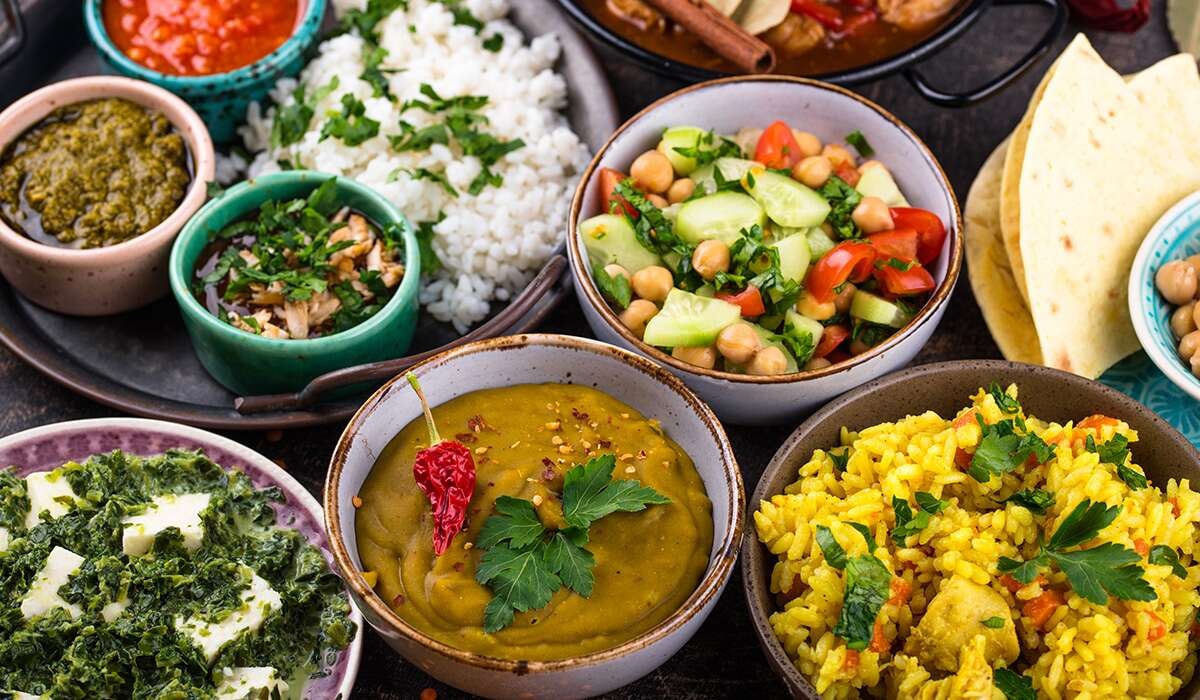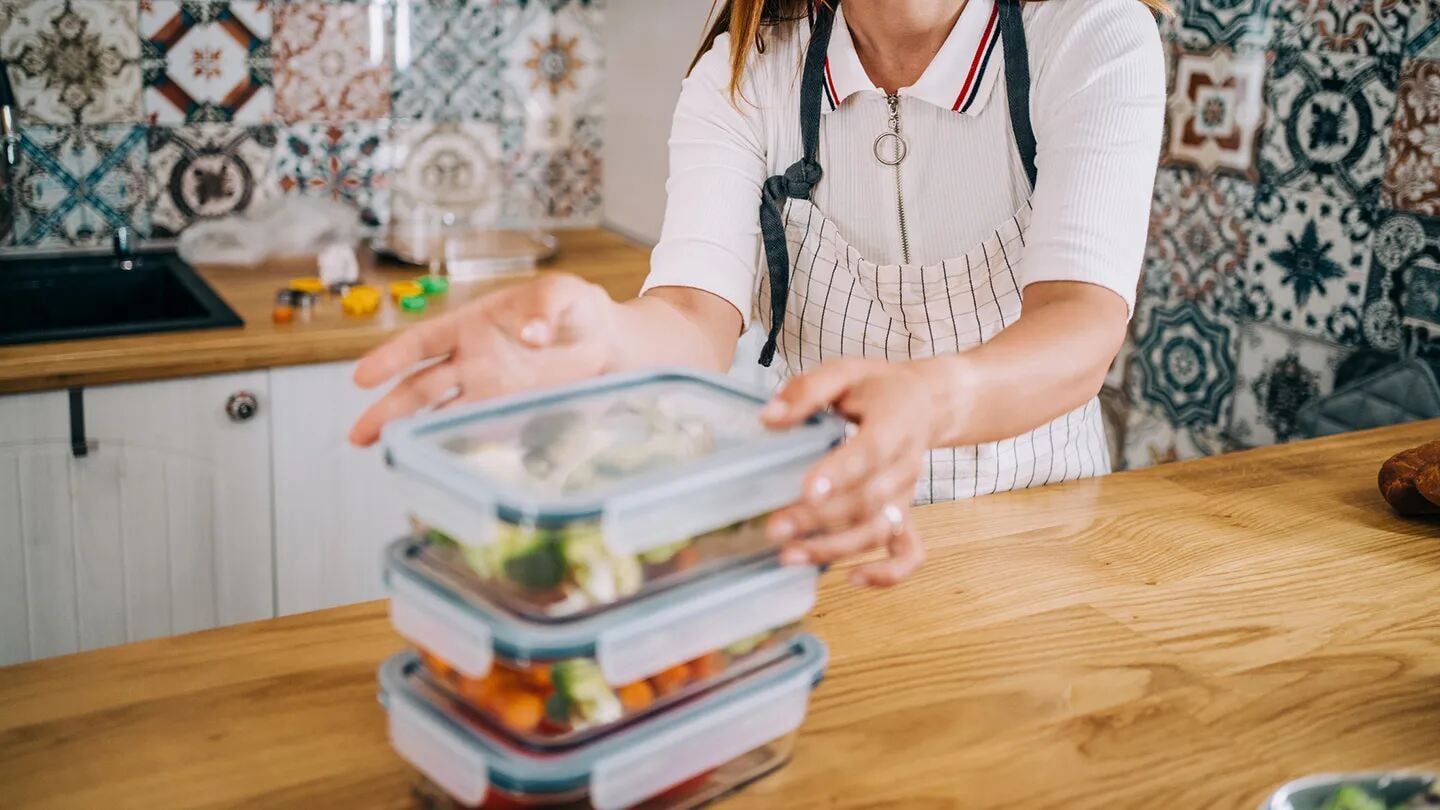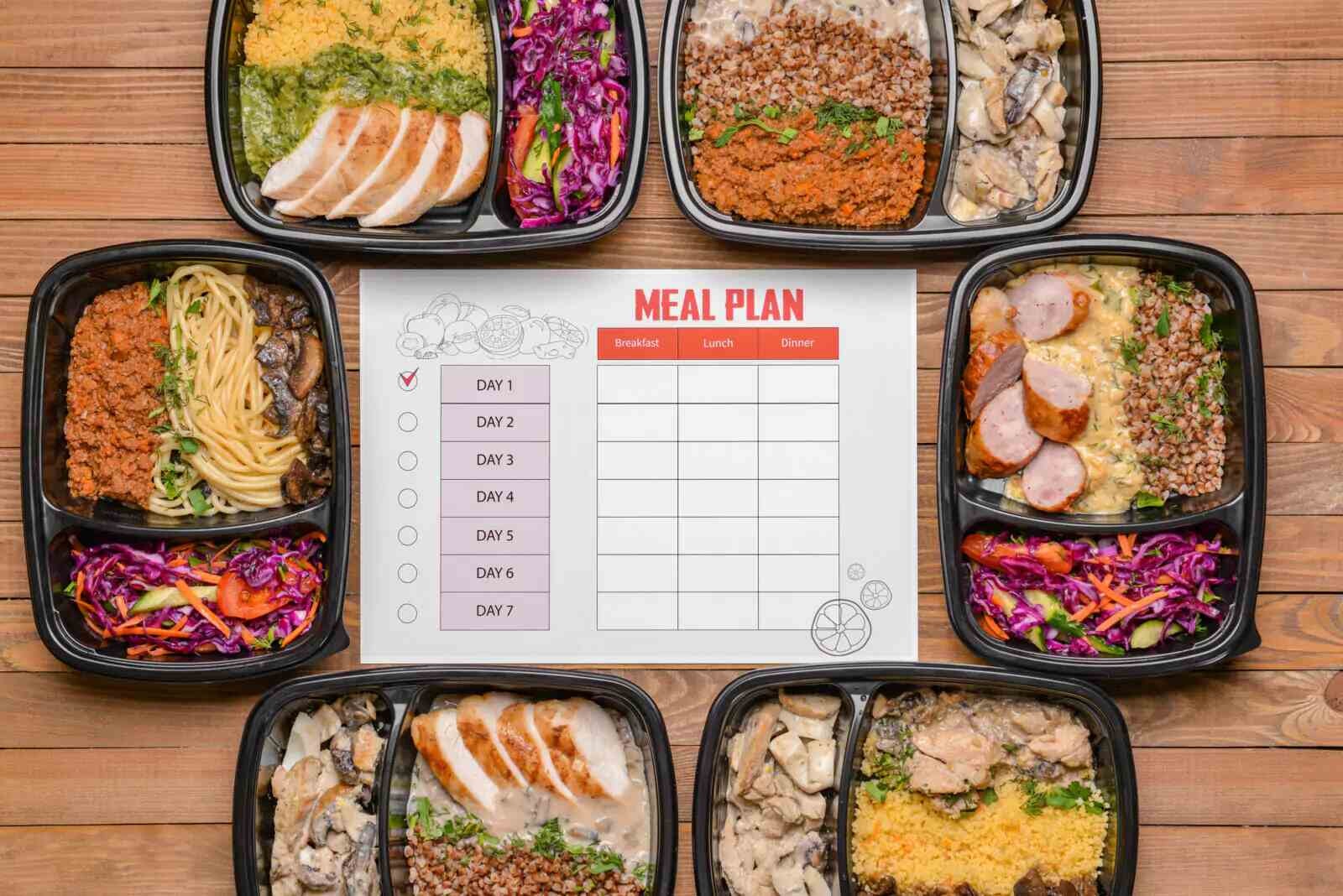Wondering if a weekly meal plan, Indian-style, can truly deliver long-term results? Discover what nutrition experts say, how to make it sustainable, and the real secrets behind lasting success.
Ever wondered if a Indian meal plan style could be the real secret to eating better without giving up flavor? Imagine still enjoying rajma, poha, or dal while watching your energy stay steady and your clothes fit better.
A healthy meal plan works when it fits your lifestyle, not when it fights it. Indian meals already bring a mix of grains, veggies, and spices that promote healthy eating naturally, if you learn how to structure them right. Think rhythm, not restriction.
This guide shows how to use simple, tasty food to build lasting habits that actually stick. You’ll learn how to plan, balance, and enjoy your meals while building better health and overall well being, without ever feeling like you’re “on a diet.”
What a Typical Indian Diet Plan Often Misses?

A typical Indian diet often looks balanced at first glance, but it usually misses structure and portion control. Many traditional meals focus more on comfort than on creating a truly healthy diet.
Most plates lean heavily on rice or roti and forget about lean proteins or nutrient rich foods. This pattern:
-
Slows progress toward steady weight loss.
-
Causes quick hunger after meals.
-
Reduces energy consistency through the day.
Frequent reliance on fried foods or processed snacks adds empty calories and limits the intake of essential vitamins.
Building a balanced diet means thinking beyond calories. It is about pairing grains with lentils, vegetables, and curd to create nutritional balance. When food variety increases, the body absorbs nutrients better and digestion improves naturally.
Small changes bring big results. Adding color, texture, and timing to each meal strengthens overall health and keeps traditional eating satisfying yet effective. Let's now see whether nutritionist advocate about Indian meals or not.
Ready to take the guesswork out of your meals? Explore personalized Indian-style plans at Balance Bite and start eating with purpose, not pressure
What Nutrition Experts Say About Indian-Style Meal Plans

Nutrition experts believe that Indian-style meal plans can be powerful when built on balance, not tradition alone. The mix of grains, pulses, and vegetables already creates a strong foundation for a healthy diet, but consistency and proportion often decide the outcome.
Experts point out that portion control and diversity matter more than calorie cutting. They suggest:
-
Pairing protein with complex carbs for stable energy and better muscle health.
-
Adding healthy fats for hormone and brain health.
-
Keeping hydration and fiber intake consistent each day.
A registered dietitian would emphasize personalization, ensuring that each plan meets individual needs and weight loss goals safely.
A well-planned Indian meal pattern can help manage weight and sustain energy levels throughout the day. It brings together flavors and nutrients to support long-term wellness and prevent cardiovascular disease.
Most experts agree that progress depends on mindful choices. Adjusting portions, cooking methods, and spice levels builds healthy meals that fit both taste and lifestyle, supporting true overall health.
Expert-backed plans work best when they fit your lifestyle. Balance Bite helps you build one that’s flexible, flavorful, and truly sustainable
A Sample Weekly Indian Diet Plan for Balanced and Healthy Eating

Here’s a Sample Weekly Indian Diet Plan for Balanced and Healthy Eating, thoughtfully structured for variety, nutrition, and sustainability. Each day includes veg, non-veg, and vegan options while maintaining balance and flavor.
Vegetarian Weekly Indian Meal Plan
This plan focuses on balance, variety, and comfort. It uses lentils, grains, and vegetables to create nutrient-rich meals that support steady energy and satisfaction.
Day 1
Breakfast: Vegetable poha with mint chutney
Lunch: Brown rice with moong dal and mixed vegetables
Dinner: Palak paneer with chapati and green chutney
Snack: Fresh fruit salad or roasted chana
Day 2
Breakfast: Vegetable upma
Lunch: Masoor dal with curd lunch and salad
Dinner: Dal tadka with white rice and seasonal fruits
Day 3
Breakfast: Oats porridge with banana
Lunch: Chana masala with chapati
Dinner: Vegetable biryani with cucumber raita
Day 4
Breakfast: Dalia with milk
Lunch: Kidney beans curry with brown rice
Dinner: Palak paneer and mint chutney with chapati
Day 5
Breakfast: Besan chilla with chutney
Lunch: Moong dal with mixed vegetables
Dinner: Vegetable pulao with salad
Day 6
Breakfast: Idli with sambar
Lunch: Masoor dal with chapati and stir-fried vegetables
Dinner: Dal tadka with white rice and salad
Day 7
Breakfast: Vegetable sandwich
Lunch: Chana masala with chapati and curd
Dinner: Vegetable biryani and green chutney
Non-Vegetarian Weekly Indian Meal Plan
This version combines traditional Indian flavors with lean proteins for better recovery, muscle health, and long-term balance without excess calories.
Day 1
Breakfast: Scrambled eggs with toast
Lunch: Egg curry with brown rice and salad
Dinner: Grilled chicken with mixed vegetables
Day 2
Breakfast: Vegetable omelet
Lunch: Chicken curry with white rice and green chutney
Dinner: Light vegetable pulao with boiled eggs
Day 3
Breakfast: Boiled eggs and fruit
Lunch: Kidney beans with wheat chapati and salad
Dinner: Grilled fish with whole grains
Day 4
Breakfast: Oats with milk and nuts
Lunch: Chicken tikka with wheat chapati and salad
Dinner: Light vegetable biryani with cucumber raita
Day 5
Breakfast: Vegetable poha
Lunch: Fish curry with brown rice and stir-fried vegetables
Dinner: Omelet roll with salad
Day 6
Breakfast: Smoothie with banana and oats
Lunch: Egg curry with wheat chapati and salad
Dinner: Grilled chicken with mint chutney
Day 7
Breakfast: Vegetable upma
Lunch: Masoor dal with white rice and grilled fish
Dinner: Light chicken soup and fresh fruit salad
Vegan Weekly Indian Meal Plan
This plant-powered plan keeps flavor alive while removing all animal products. It highlights legumes, whole grains, and fresh produce for complete nutrition and sustainability.
Day 1
Breakfast: Besan chilla with mint chutney
Lunch: Moong dal with brown rice and mixed vegetables
Dinner: Chana masala with chapati
Day 2
Breakfast: Smoothie with oats and almond milk
Lunch: Vegetable pulao with tofu stir-fry
Dinner: Masoor dal with millet roti and green chutney
Day 3
Breakfast: Flattened rice with vegetables
Lunch: Dal tadka with white rice and salad
Dinner: Palak paneer made with vegan cheese
Day 4
Breakfast: Oats porridge with seasonal fruits
Lunch: Kidney beans curry with whole grains
Dinner: Stir-fried vegetables and mint chutney
Day 5
Breakfast: Vegetable poha
Lunch: Chana masala with chapati
Dinner: Vegetable biryani and green chutney
Day 6
Breakfast: Dalia with plant-based milk
Lunch: Masoor dal with mixed vegetables
Dinner: Moong dal and tofu curry with chapati
Day 7
Breakfast: Smoothie bowl with fresh fruit salad
Lunch: Dal tadka with white rice
Dinner: Vegan palak paneer with millet roti and mint chutney
Each plan keeps the heart of an Indian meal plan intact: wholesome ingredients, comfort, and balance. With smart variety, your weekly meal becomes both nourishing and exciting—fueling long-term wellness without giving up flavor.
Follow These Steps to Create Your Own Weekly Indian Meal Plan
Building a personalized weekly plan means shaping your meals around your goals, schedule, and energy needs. A structured Indian meal plan helps maintain balance, prevent monotony, and make smart food choices feel automatic.
When you learn to plan meals thoughtfully, every dish becomes a part of your long-term wellness routine instead of a short-term effort.
1. Set a Weekly Goal Based on Your Diet Needs
Start with clarity. Define what you want your week to achieve—weight balance, more energy, or better digestion. Setting an achievable goal keeps motivation real.
-
Write down specific outcomes like “more home-cooked meals” or “fewer takeouts.”
-
Align your target with your calorie needs and activity level.
-
Keep it measurable to track progress easily.
Each goal builds a framework for decisions about what goes on your plate.
2. Plan Balanced Meals with Protein, Whole Grains, and Mixed Vegetables
Balance keeps your body fueled and your appetite steady. Pairing lean proteins, whole grains, and vegetables ensures a steady nutrient flow throughout the day.
-
Combine rice or chapati with lentils and colorful veggies for a complete plate.
-
Include healthy fats like olive oil, nuts, or seeds to improve satiety.
-
Adjust portion sizes to fit your energy and hunger levels.
Balanced meals prevent energy dips and support both strength and focus.
3. Rotate Core Ingredients Like Brown Rice, Masoor Dal, and Seasonal Veggies
Variety protects against boredom and nutrient gaps. Rotating your staples keeps meals enjoyable while enhancing your meal preparation efficiency.
-
Use brown rice, masoor dal, and seasonal vegetables as flexible bases.
-
Plan two or three repeating ingredients for simplicity.
-
Alternate spices and cooking styles to maintain interest.
Rotation keeps nutrition consistent without the fatigue of repetition.
4. Add Light Sides Like Cucumber Salad and Mint Chutney for Variety
Sides elevate meals without adding heaviness. Fresh pairings improve digestion and taste satisfaction.
-
Pair lunch or dinner with crisp salads or light chutneys.
-
Include cucumber, tomato, or lemon-based mixes for refreshment.
-
Choose sides that add fiber and hydration instead of calories.
These additions make meals lighter, cleaner, and more complete.
5. Include One Healthy Eating Swap Per Day (Less Oil, More Fiber)
Small changes lead to lasting impact. One mindful switch a day creates noticeable improvement in how your body feels and performs.
-
Choose baking or steaming instead of frying.
-
Replace white rice with brown or millets for better fiber.
-
Add sprouts or greens for extra nutrients.
Over time, these swaps turn short-term plans into effortless habits.
6. Prep a Grocery List to Match Your Indian Meal Plan
Smart grocery shopping saves time and prevents waste. A list keeps your focus on what your body needs, not what cravings want.
-
Note down essentials like lentils, grains, and produce for the week.
-
Buy lean proteins in advance to streamline cooking.
-
Avoid impulse buys by sticking to your written plan.
Preparation at the store makes nutrition easier at home.
7. Cook in Batches to Save Time and Reduce Waste
Batch cooking reduces stress and supports consistency. Preparing in advance ensures you always have healthy food within reach.
-
Schedule one or two days for large meal preparation.
-
Store cooked grains, dals, or chopped vegetables for quick assembly.
-
Reuse base curries or sauces to cut cooking time.
Cooking smarter frees up energy for more important parts of your day.
8. Leave Room for Flexibility and Simple Adjustments
Flexibility keeps your plan sustainable. Life happens, and your routine should adapt without guilt.
-
Swap meals across days when your schedule changes.
-
Allow a relaxed breakfast or treat dinner once in a while.
-
Keep your focus on balance, not perfection.
Consistency matters more than rigidity. A flexible approach helps your weekly meal plan support real-life balance while keeping food joyful.
7 Steps to Adjust Your Meal Plan for Low Calorie Days(Without Losing Variety)

Some days call for lighter meals without giving up flavor or satisfaction. Low-calorie eating should not mean bland food or hunger—it should simply mean smarter portion control and better choices. These steps show how to reduce calorie intake while still enjoying variety and comfort.
1. Reduce Portion Size Without Skipping Entire Food Groups
The goal is moderation, not elimination. Smaller servings give your body room to digest properly while keeping nutrition steady.
-
Serve yourself 20% less instead of removing items entirely.
-
Use smaller plates to manage portion control visually.
-
Keep proteins, grains, and vegetables in every meal for balance.
Slightly trimming serving sizes maintains nourishment without creating restriction fatigue.
2. Fill Half Your Plate with Low-Calorie and High-Fiber Veggies
Vegetables are your secret weapon for fullness. They lower calorie intake while improving digestion and adding color to your plate.
-
Include spinach, bottle gourd, carrots, and beans in rotation.
-
Try light dishes like vegetable poha for breakfast or lunch.
-
Add a squeeze of lemon for freshness and flavor.
Fiber-rich veggies keep energy stable and hunger at bay, supporting steady progress throughout the day.
3. Swap Heavy Curries for Simple Stir-Fries or Soups
Heavy gravies often hide extra oil and calories. Lighter cooking methods keep healthy meals flavorful and nutrient-rich.
-
Use tomato or yogurt bases instead of cream or butter.
-
Try one-pot batch cooking Indian food recipes for convenience.
-
Rotate soups and sautéed vegetables for lighter evenings.
The goal is to make food feel light yet satisfying, not stripped of taste.
4. Use Herbs and Spices to Keep Flavors Exciting
Flavor prevents boredom, which keeps you consistent. Herbs and spices make flavorful meals enjoyable even with fewer calories.
-
Add cumin, turmeric, or coriander for depth.
-
Fresh herbs like mint and cilantro enhance aroma.
-
Sauté spices briefly to release their full flavor.
Strong taste allows your brain to feel satisfied even with smaller portions.
5. Eat Smaller Meals More Often if That Feels Easier
Spacing meals helps maintain energy levels and prevents overeating later. Smaller servings eaten more frequently work for most people.
-
Divide your meals into 4 or 5 mini portions.
-
Add light snacks such as roasted chana, mixed nuts, or fox nuts.
-
Drink water between meals to support fullness.
This pattern supports blood sugar balance and keeps you from grazing mindlessly.
6. Keep One Meal Lighter Instead of Cutting Back All Day
Consistency works better than over-restriction. Choose one lighter meal when needed but avoid starving yourself for long periods.
-
Make dinner your lighter meal by focusing on soups or salads.
-
Keep breakfast or lunch hearty for sustained energy.
-
Avoid cutting back drastically; balance always wins.
Balanced adjustments sustain your energy and mood throughout the day.
7. Prepare Ahead to Avoid Reaching for High-Calorie Options
Planning is what keeps low-calorie eating realistic. Batch cooking Indian food ensures there’s always something healthy within reach.
-
Pre-chop vegetables and store them in clear containers.
-
Cook lentils or rice in advance for easy mix-and-match meals.
-
Keep small snack boxes of fox nuts or roasted chana handy.
Preparedness replaces impulse with intention, making every meal easier and lighter.
Small, smart adjustments create long-term results. Light meals, planned portions, and mindful variety turn low-calorie days into opportunities for better balance, not deprivation.
Need low-calorie options that still taste like home? Find easy, nutritious swaps at Balance Bite and make every plate both light and satisfying
Signs Your Weekly Meal Plan Is Working and When to Tweak It

A good plan does not just fill your plate, it improves your energy, focus, and overall well being. When your weekly meal plan starts showing steady progress, you will feel it in both body and mindset. These signs help you know when your plan is on track and when it needs fine-tuning for the new week ahead.
1. You Feel Energetic and Less Sluggish After Meals
Energy is one of the clearest markers of success. If you feel lighter and more active after you eat, your plan is working.
-
Meals that balance carbs, protein, and fiber prevent energy crashes.
-
A consistent healthy breakfast jump-starts focus for the day.
-
Avoiding excess sugar or oil supports steady energy through the afternoon.
When your body feels alert, it means your metabolism and food timing are aligned.
2. Digestion Feels Smoother and More Consistent
Good digestion signals a strong system. Stable digestive health shows that your body is absorbing nutrients properly.
-
Regular meals with fiber from fruits and vegetables help reduce bloating.
-
Drinking enough water keeps digestion efficient.
-
Avoiding late-night meals improves sleep and comfort.
When your gut feels settled, your body is clearly adapting to your food rhythm.
3. Your Cravings Start to Reduce Over Time
Reduced cravings mean your nutrition is in balance. The body craves less when it receives enough protein, fiber, and nutrients.
-
Include small snacks like nuts or fruit between meals to avoid hunger spikes.
-
Satisfy taste buds with smart flavor pairings from your favorite recipes.
-
Eat mindfully to recognize fullness cues early.
Balanced meals satisfy both physical hunger and mental comfort.
4. You’re Noticing Gradual, Healthy Weight Changes
A steady drop or maintenance of a healthy weight means your plan fits your natural rhythm. Fast changes rarely last, but gradual ones do.
-
Avoid comparing progress weekly; focus on monthly patterns instead.
-
Small shifts in body tone and confidence are strong signals.
-
Energy levels often improve before visible results appear.
True balance shows when your clothes fit better, and your confidence feels stronger.
5. Meals Are Satisfying Without Leaving You Overfull
Satisfaction, not restriction, marks a plan that works. Finishing a meal comfortably full is a clear sign of success.
-
Mix fiber-rich foods with lean proteins for balanced fullness.
-
Limit heavy or fried foods during late dinner.
-
Keep portions steady but flexible as activity levels change.
Feeling nourished instead of stuffed supports long-term well being and stable digestion.
6. You’re Sticking to the Plan Without Feeling Deprived
When the plan feels easy to follow, it has become a lifestyle. Comfort and structure are the backbone of any lasting change.
-
Rotate meals weekly to keep flavors interesting.
-
Plan one treat meal to maintain enjoyment.
-
Use recipes that align with your preferences and culture.
Ease of consistency means your plan fits who you are, not who you are trying to become.
3 Signs You Need to Tweak Your Diet Plan
Even the best plan can need adjustments. Recognizing early signs of imbalance helps you reset smoothly and begin the new week stronger.
1. Not Seeing Progress Despite Sticking to the Plan
If energy, mood, or body changes have stalled, something may need rebalancing.
-
Review portion sizes and snacking habits.
-
Swap repetitive meals with new ingredients.
-
Revisit your recipes to add variety and nutrients.
Progress thrives on small changes, not strict rules.
2. Daily Schedule or Work Routine Has Changed
Lifestyle shifts can throw your plan off rhythm. Adapting keeps your meals aligned with real life.
-
Adjust your healthy breakfast, lunch, or dinner timing as needed.
-
Prep meals in advance when work hours increase.
-
Keep portable snacks handy for long days.
Staying flexible ensures your food supports your routine, not the other way around.
3. Skipping Meals or Feeling Unsatisfied
Missed meals or lingering hunger suggest an imbalance in timing or portions.
-
Eat smaller, more frequent meals to stabilize energy.
-
Include light snacks rich in protein or fiber.
-
Revisit your plan for better balance between variety and satisfaction.
Your body communicates through hunger, energy, and mood. Listening early helps you make smart tweaks and maintain digestive health and overall well being effortlessly.
7 Ways to Turn Your Indian Diet Plan into a Long-Term Healthy Lifestyle

A good plan doesn’t end when the week does. It evolves. Turning your weekly meal plan into a lifelong habit means focusing on flexibility, variety, and mindset. These steps help you build a rhythm that feels sustainable and keeps your progress steady.
1. Keep Your Weekly Meal Plan Flexible, Not Rigid
Flexibility keeps you consistent. A rigid plan breaks under real-life pressure, but adaptable routines thrive.
-
Swap similar ingredients when options change.
-
Mix up vegetables and grains based on what’s fresh and available.
-
Allow one comfort meal weekly to stay satisfied.
Flexibility transforms a strict diet into a lifestyle that fits every schedule.
2. Rotate Ingredients and Cuisines to Avoid Boredom
Repetition kills motivation. Rotation keeps both your taste buds and body engaged.
-
Replace wheat roti with millet or whole wheat flour versions for variety.
-
Try new regional dishes while keeping nutrition in check.
-
Use seasonal produce to refresh meals naturally.
Changing ingredients keeps meals exciting without losing structure or purpose.
3. Listen to Your Body and Adjust Portions Over Time
Your hunger cues evolve as your lifestyle shifts. Adjust portion sizes based on activity level, mood, and daily energy needs.
-
Eat slightly more on active days and less when resting.
-
Avoid eating past fullness to maintain comfort.
-
Reflect weekly to see if your plate still fits your goals.
Responsive eating strengthens trust between your body and your habits.
4. Prepare Simple Meals You Can Stick to Even on Busy Days
Complex cooking routines often fail under pressure. Simplicity keeps you consistent when life gets demanding.
-
Keep flattened rice, lentils, and quick-cook grains on hand.
-
Batch-cook staples like dal or curry bases once a week.
-
Freeze extra portions for quick reheating on hectic evenings.
Simple meals maintain both nourishment and peace of mind.
5. Focus on Progress, Not Perfection
A long-term plan depends on consistency, not flawlessness. Every small improvement counts.
-
Track energy and focus instead of just the scale.
-
Allow for flexible weekends without guilt.
-
Celebrate steady effort as your real win.
Progress built through patience lasts far longer than quick perfection.
6. Involve Family to Build a Supportive Food Environment
When healthy habits become family habits, consistency grows naturally. Shared meals create connection and motivation.
-
Cook together to make healthy eating enjoyable.
-
Introduce small changes like using chickpea flour or less oil.
-
Encourage variety in children’s meals to build lifelong habits.
Shared effort keeps the environment supportive and sustainable.
7. Review Your Plan Monthly and Make Small Tweaks
Reflection keeps your journey aligned with your goals. A quick monthly review helps adjust habits before they drift.
-
Note what meals felt easiest to follow.
-
Adjust timing or vegetables based on your regular physical activity level.
-
Add one added bonus food each month, like a new spice blend or recipe.
Small refinements each month keep your plan fresh, realistic, and adaptable, turning short-term structure into a lifestyle that lasts.
Conclusion
You’ve made it this far, so here’s the truth, real results don’t come from a perfect plan but from what you do next. Start with one change: plan a meal, cook with intention, or choose balance over shortcuts. Small steps done consistently beat big promises every time.
Your weekly meal plan isn’t just about food, it’s your chance to build lasting control, one simple choice at a time and when you stick with it, you give yourself the great gift of lasting health and confidence.
You’ve got the plan, now bring it to life. Visit Balance Bite and turn your weekly meals into lasting habits of health and confidence




















Leave a comment
Translation missing: en.blogs.comments.discription